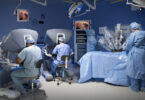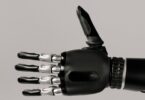VR and AR is a new field in medicine, which is being studied for potential efficacy in treating Alzheimer’s disease, depression, addiction, and other diseases.
Technological advances and the increasing availability of Augmented Reality (AR) and Virtual Reality (VR) devices will mean that these tools can improve healthcare outcomes, reduce errors and costs, and provide a more engaging and engaging learning experience. effective for medical students.
In diagnostics, AR and VR can display medical images, such as scans and X-rays, in more interactive and intuitive ways, enabling medical professionals to make more informed decisions and improve patient outcomes. In the case of medical imaging systems, augmented reality can be used to project medical images onto a patient’s body, helping doctors accurately diagnose diseases.
AR and VR are rapidly evolving. AR and VR can provide a more interactive and immersive experience for medical education and training, allowing medical students to view anatomy and practice procedures in a virtual environment. This will help them better understand complex medical concepts and improve their skills. With this innovative technology, engineers can create an accurate virtual model of a physical object and examine it in a simulated environment. This method is faster and cheaper as no physical prototypes are needed for testing, making the prototyping process much smoother than before.
VR can be used to simulate complex surgical procedures, allowing doctors to practice before operating on a real patient. Digital twin technology revolutionizes the prototyping of medical devices, biocompatible materials, and prosthetics.
According to the Centro Superior de Investigaciones Científicas (CSIC) it has managed to reduce the effects of Parkinson’s in several patients by applying a treatment with VR.








